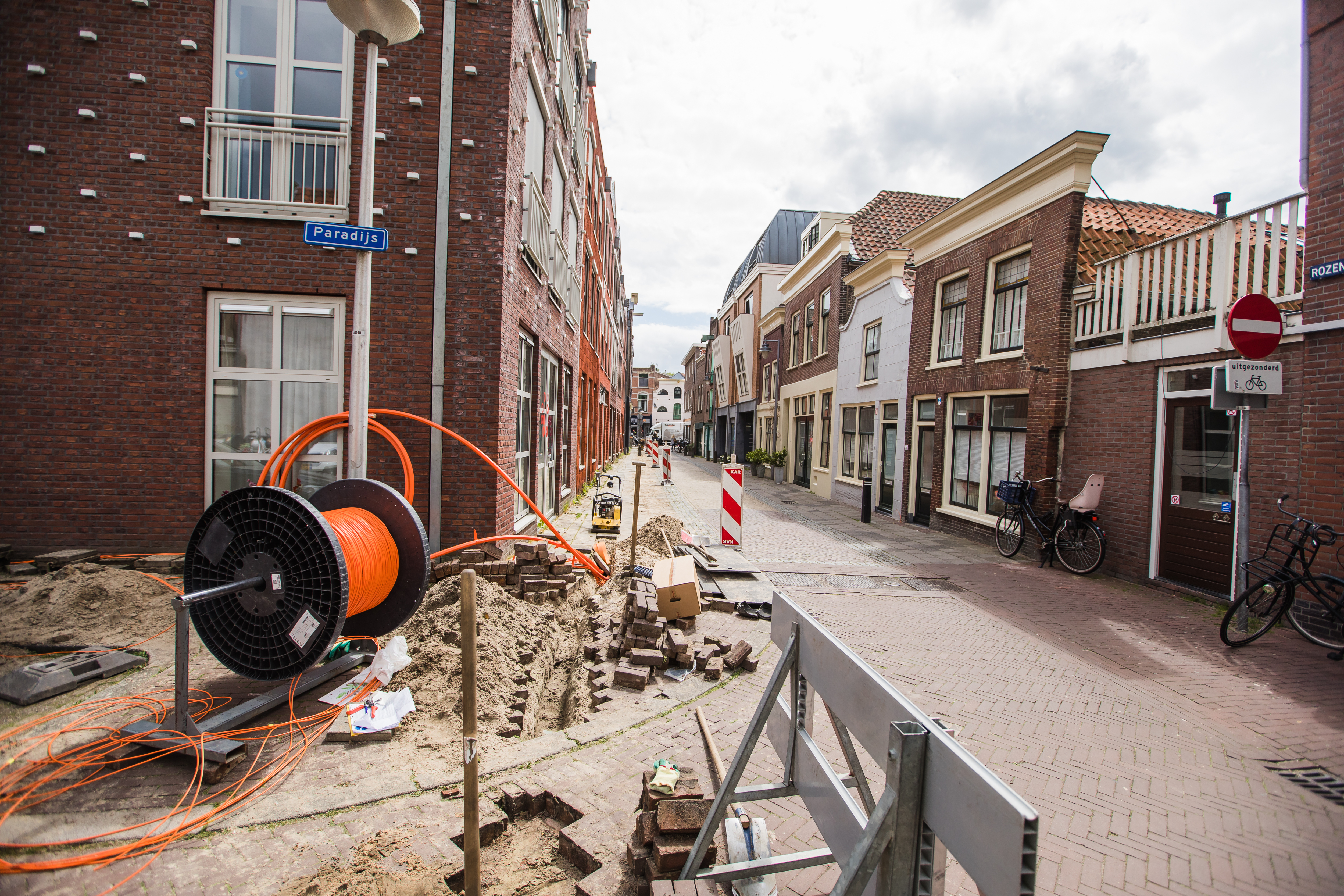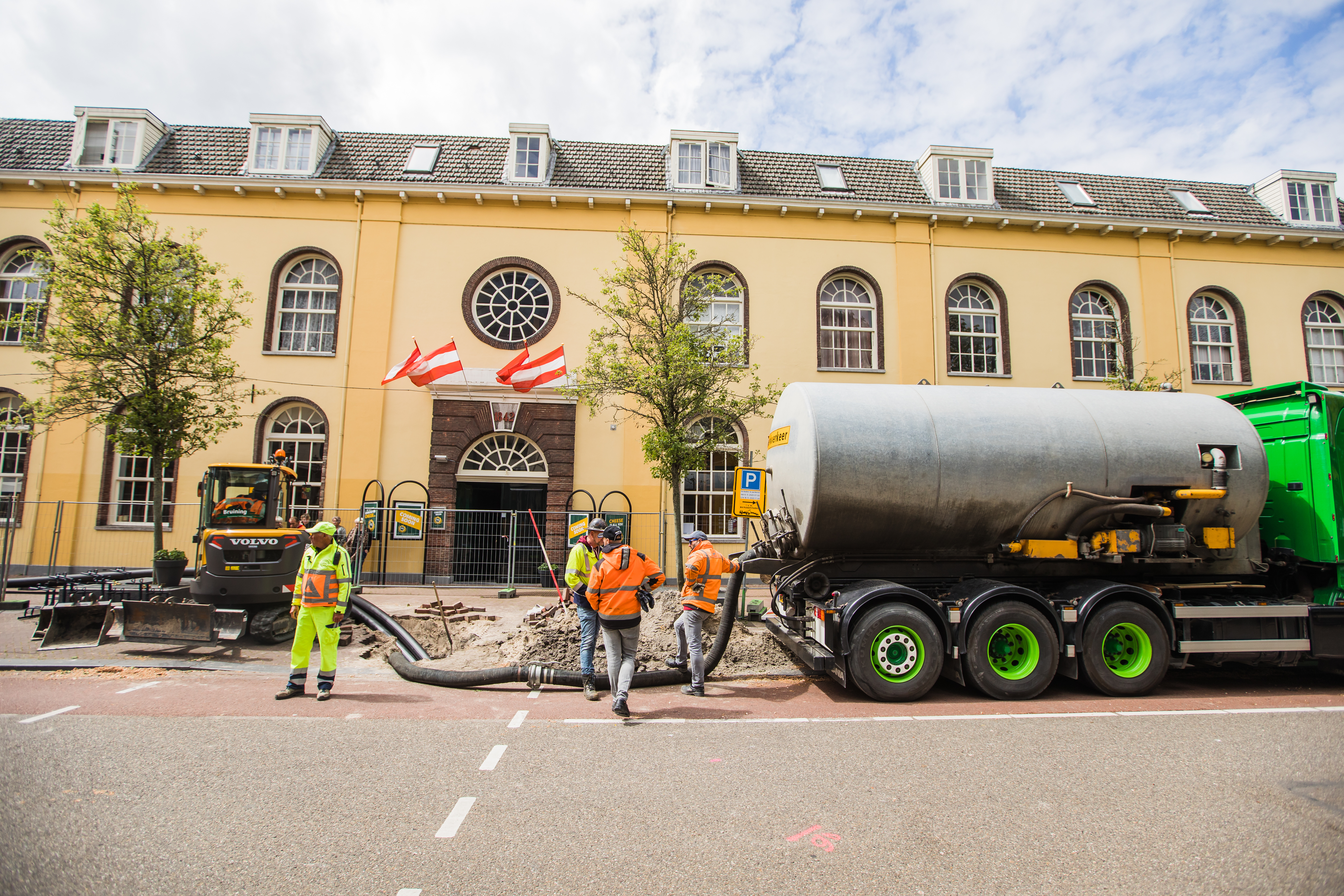
Fibre optics in the heart of the Middle Ages
Drilling in the soil of the 745-year-old historic centre of Gouda? You cannot just do that without permission. After thorough preliminary research and coordination with the municipality, water boards and an archaeologist, VolkerWessels Telecom, together with our sister company Visser & Smit Hanab, was allowed to perform directional drilling to connect 5400 homes to fibre optics. Project leader Senoer Lao talks about the special project. ‘We perform directional drilling on a fairly regular basis, but not often in a historic town centre with such characteristic features. There are many factors to take into account.’

Under the water and along the city wall
Directional drilling is usually carried out in situations where you do not have the opportunity to dig from a to b. This is assessed for each particular situation, but in the historic centre drilling is the only option. Senoer: ‘The centre of Gouda is like an island, surrounded by water and an old city wall. Underneath you have to make a passage while bypassing the wall. Finding the right place to drill was a challenge. Coordination with the municipality, the water board, the shopkeepers’ association and the city archaeologist went smoothly. After six months of preparation, we had found a technical solution that met all requirements and wishes. Moreover, we found ourselves in a narrow, one-way traffic street and didn’t want to get in the shopkeepers’ way too much. So we agreed to drill between 9 a.m. and 3 p.m. every day, so that shops remained accessible to suppliers and could be stocked. When all this was properly arranged and all parties agreed, we could get to work.’
Moving subsoil
Directional drilling involves digging a tunnel and pulling a casing pipe through the open area, into which the cables are then laid. In order to do this quickly and safely, the entire subsoil first had to be analysed. The previously laid pipelines were properly registered at the land register, but the city of Gouda appears to have a moving subsoil. ‘The area consists of hard water, so the soil is constantly moving. Plus Gouda subsides an average of 5 centimetres a year.’ That doesn’t seem much, but a few centimetres can have a disastrous effect during underground work. ‘The location of pipelines that were once registered is then no longer correct. This is particularly risky in the case of a large drilling operation. Visser & Smit Hanab recharted the area, and designed and carried out the drilling. We could rely on their expertise, they’re not taken aback by this kind of drilling anymore.’

Archaeological finds
The drilling went well, so that now three 160-millimetre pipes each have been laid over a distance of 110 metres. Cables and pipes were avoided, but we were in for some surprises during the work. ‘On the first day we came across skeletal remains, and it turned out that we had stumbled upon a 500-year-old cemetery. A beautiful find, but we worried about it too. We had a tight deadline. Within four weeks the first customers would be ready for their fibre-optic connection. During an archaeological find you run the risk that the project is temporarily halted for further research. Fortunately, in this case we were allowed to temporarily remove the remains, store them well and put them back and register them with the municipality after drilling. We also came across an old concrete quay wall, so we suddenly had to arrange a crane to lift the wall out of the area. Every day was a surprise!’